How efficient and effective is your support organization? Do you measure how efficiently staff are handling core support activities? Do you meet or exceed industry performance benchmarks? The process of delivering support is labor intensive and costly. It is imperative that you establish and measure support productivity. Learn How.
Productivity
Productivity is defined as the rate of output per unit of input. Productivity can measure the efficiency of an individual, machine, or collection of inputs used to create outputs. In its broadest uses, productivity is used to measure the efficiency of entire systems – factories, business units, departments, supply chains and economies. For productivity to have relevance as a measure of efficiency there must be a clear definition of the following elements:
- Outputs – A definition of what is produced. A unit of output must be clearly defined in terms of both characteristics and quality.
- Inputs – A clear definition of what is included in the production of a unit of output. A unit of input may include the effort of an individual (e.g. hours worked) or a combination of many elements (labor, capital, energy, raw materials, etc.).
- Efficiency Baseline – Productivity as a measure of efficiency relies on a baseline expectation of what should be produced per unit of input. A baseline may be established through observation.
- Timeframe – Productivity is bound by time. To compare productivity levels the same timeframe must be used (e.g. a day, week, year, etc.).
Support Productivity
Applying productivity measures to Support relies on the same principles as noted above and requires a clear definition of outputs and units of input. When productivity is applied as a measure of efficiency, there must also be an expected baseline performance. For Support, productivity is often narrowly focused on case resolution as the primary output. Measuring case resolution productivity is critical to Support, as it is the largest single output and consumes the most resources, but case resolution productivity cannot be considered the same as overall Support Productivity.
Successful Support organizations should measure Case Resolution Productivity but must also be cognizant of a more holistic definition of productivity that includes outputs beyond the number of cases handled or resolved. Support is capable of delivering outputs measured in terms of customers onboarded, customers satisfied, contracts renewed, revenue retained, recommendations generated, and revenue and profit earned.
Definitions for both Case Resolution Productivity and a more holistic view of Overall Support Productivity are offered below.
Case Resolution Productivity
Case Resolution Productivity measures the rate and efficiency of resolving customer issues. The unit of output is ultimately defined as a closed case, however the effort to work on cases, even if not closed, may also be considered as an output. The unit of input measures the level of effort expended by Support staff to work on and resolve cases. Case Resolution Productivity may be measured for an individual, team, product line, or across the entire Support department. Elements required for the successful evaluation of Case Resolution Productivity are described below.
Inputs
Input is the total effort that an individual or team expends on case resolution activities. This does not include time allocated to non-case resolution tasks (e.g. training, projects, etc.) Input may be used to measure the productivity to perform a discrete task (work on cases) or by the total effort to accomplish a specific outcome (e.g. close cases). The successful measurement of Case Resolution Productivity demands a firm definition of the inputs required to produce the outputs, consider the following:
Effort (Individual)
Effort defines the total hours allocated to perform specific activities. As an example, input will include the total number of hours per day that a Support engineer is assigned to handled support cases and may include activities such as entitlement verification, triage, troubleshooting, etc.
Total Effort to Close (Team)
Total Effort to Close may also be expressed as the total time and effort to achieve a specific outcome such as closing a case by many individuals and span multiple days.
Total Cost to Close
Input may be expressed in financial terms as the total costs to close a case. Costs will include all salaries and overhead consisting of management, infrastructure, and facilities for the resources directly involved in the resolution of the case.
Outputs
The unit of output for Case Resolution Productivity is ultimately defined as a closed case, however the effort to work on cases, even if not closed, may also be considered as an output. The successful measurement of Case Resolution Productivity demands a firm definition of output. Consider the following:
Cases Handled
Cases Handled is defined as the number of cases handled by individuals or teams during a measured timeframe. The “handling” of a case indicates that time and effort has been expended working on a case, but does not imply that the case is resolved.
Cases Closed
Cases Closed is the number of cases closed during a specific timeframe. Case closure productivity can focus on first contact resolution or resolution within any other timeframe such as the same day, within a 24-hour period, within a week, or longer.
Satisfied Cases Closed
Satisfied Cases Closed is defined more narrowly by counting only cases that are resolved to the satisfaction of the customer. This requires the definition of a threshold to determine what method of satisfaction assessment and score yields a “satisfied closed case.” Note that the inputs required to achieve this level of output can be significantly higher. All time and effort required to satisfy the customer must be considered.
Even with extraordinary efforts, not all cases can be resolved to the satisfaction of customers. Given that an acceptable output may not be attainable in all cases, the expenditure of inputs (time and effort to attempt to resolve a cases) must still be accounted for. In situations where cases do not meet customer expectations, thus are not counted as Satisfied Cases Closed (output), productivity rates will be lower than if all closed cases, regardless of satisfaction, are counted as output.
Timeframe
Case resolution is a process that may take a few minutes or several days to achieve the desired output. If the measured output is closed cases it is not ideal to measure productivity daily as case resolution may span many days. If the measured output is focused on number of cases handled or cased closed upon first contact then it is possible to measure productivity for an individual daily. Longer timeframes provide a more realistic assessment of productivity as it can account for variations in workload and case types.
Productivity Metrics
Case Resolution Productivity Metrics provide insight into how much output is produced with available inputs. As discussed in the previous section the measure of productivity demands a clear definition of outputs and inputs. There are several ways to measure Support Productivity and will vary based on the inputs and outputs used. This section introduces the following three Case Resolution Productivity Metrics:
- Case Handling Productivity – The measure of how many cases can be handled (output) by an individual or team with a specific number of hours of effort (input).
- First Contact Case Closure Productivity – The measure of how many cases are closed during the initial customer interaction (output) by an individual or team with a specific number of hours, effort, or cost (input).
- Case Closure Productivity – The measure of how many cases are closed (output) by a team with a specific number of hours, effort, or cost (input) expended over multiple days.




